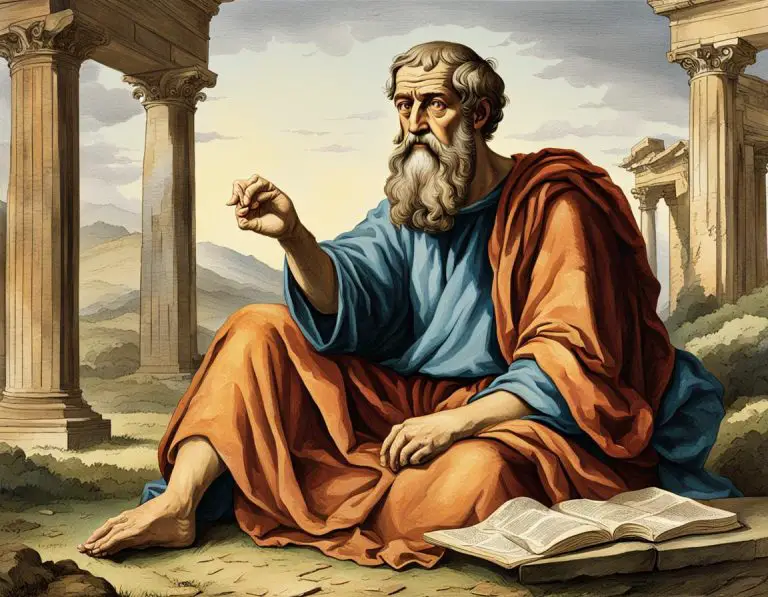Critique of Plato’s Allegory of the Cave
Plato’s Allegory of the Cave has long been lauded for its vivid imagery and thought-provoking narrative that serves as a foundation for philosophical discourse. However, upon closer examination, one may find certain limitations in its argument. The allegory presents a stark contrast between the prisoners in the cave and the philosopher who has escaped into the light of truth. Critics argue that this binary depiction oversimplifies the complexities of human understanding and fails to account for the nuances of individual experiences within society.
Furthermore, some scholars point out that the Allegory of the Cave neglects to address the role of power dynamics in shaping knowledge and perceptions. The prisoners in the cave are portrayed as passive recipients of information, prompting questions about agency and autonomy in the pursuit of enlightenment. The allegory’s emphasis on the philosopher as the sole arbiter of truth raises concerns about elitism and reinforces hierarchies of knowledge that may perpetuate exclusionary practices in educational settings.
Examining potential weaknesses in Plato’s argument
While Plato’s Allegory of the Cave is a powerful philosophical allegory, it is not without its criticisms. One potential weakness lies in the assumption that there is an objective reality that exists beyond our perceptions. Plato argues that the physical world we perceive through our senses is merely a shadow of the true reality, the world of Forms. However, this premise is challenged by modern thinkers who argue that reality is subjective and shaped by our individual experiences.
Another criticism of Plato’s Allegory of the Cave is its hierarchical structure of knowledge, with philosophers at the pinnacle of understanding. This implies a sense of elitism and exclusivity, overlooking the value of diverse perspectives and forms of knowledge. Critics argue that knowledge is not restricted to a select few individuals but is instead a collective and evolving process that involves multiple voices and experiences.
Interpretations of Plato’s Allegory of the Cave in literature
Many literary works have drawn inspiration from Plato’s Allegory of the Cave, incorporating its themes of enlightenment, perception, and truth into their narratives. One prominent example is George Orwell’s novel “1984,” where the protagonist, Winston Smith, grapples with the concept of reality and the manipulation of truth by a totalitarian regime. The novel aligns with the allegory by exploring the consequences of living in a society where individuals are kept in the dark about the truth and are fed a distorted version of reality.
Another notable interpretation of Plato’s Allegory of the Cave can be found in Aldous Huxley’s dystopian classic, “Brave New World.” In this novel, Huxley delves into a future society where happiness is manufactured, and individuals are conditioned to accept a superficial reality devoid of genuine human experiences. The parallels to the allegory are evident as the characters in the novel are metaphorically chained to their illusions, unaware of the deeper truths that lie beyond their controlled existence.
How other writers have been inspired by Plato’s work
Plato’s Allegory of the Cave has served as a wellspring of inspiration for various writers across different literary genres. The profound themes of enlightenment, perception, and the search for truth depicted in Plato’s work have resonated with writers throughout history, leading to numerous adaptations and reinterpretations of the allegory in literature. From modern novelists to poets, Plato’s allegory continues to spark creativity and introspection in contemporary literary works.
Writers often draw from Plato’s Allegory of the Cave to explore complex philosophical concepts and delve into the nature of reality and truth. Some authors use the allegory as a literary device to construct allegorical narratives that challenge readers to question their own beliefs and perspectives. By weaving elements of Plato’s allegory into their works, writers aim to provoke thought and contemplation, inviting readers to reflect on the nature of knowledge and the limitations of human perception.
Educational implications of Plato’s Allegory of the Cave
The educational implications of Plato’s Allegory of the Cave are profound and far-reaching. This allegory serves as a powerful tool for educators to illustrate the concept of critical thinking and intellectual growth to students of all ages. By using the cave as a metaphor for the limitations of perception and knowledge, teachers can encourage students to question their preconceived notions and venture outside their comfort zones in pursuit of truth and enlightenment. This philosophical tale challenges learners to consider the nature of reality and the importance of seeking knowledge beyond what is readily apparent.
Furthermore, the Allegory of the Cave can inspire educational institutions to adopt more holistic teaching methods that prioritize critical thinking and self-reflection. By incorporating philosophical discussions and thought experiments into the curriculum, educators can nurture a more intellectually curious and open-minded student body. The allegory underscores the value of philosophical inquiry in fostering a deeper understanding of the world and encourages individuals to continuously question, analyze, and expand their perspectives on reality and existence.
The significance of philosophical teaching methods
Philosophical teaching methods hold a significant role in shaping the way students engage with complex ideas and concepts. Through the use of Socratic questioning, students are encouraged to think critically and challenge their own beliefs, leading to a deeper understanding of the subject matter. By adopting a dialectical approach to learning, educators can guide students towards uncovering truths through reasoned debate and discussion.
Furthermore, philosophical teaching methods promote intellectual humility and openness to diverse viewpoints. By fostering an environment where students feel comfortable exploring ideas from multiple perspectives, educators can help cultivate a culture of respectful dialogue and mutual understanding. This approach not only enhances students’ cognitive abilities but also nurtures their capacity for empathy and tolerance towards differing opinions.
Related Links
Roundup of Plato’s Philosophical Ideas
How to understand Plato’s Theory of Forms
